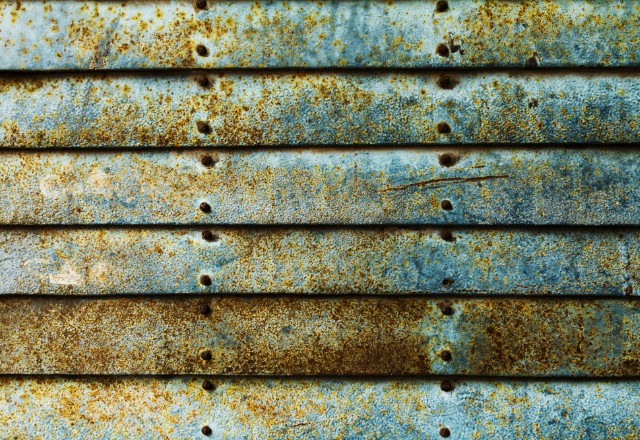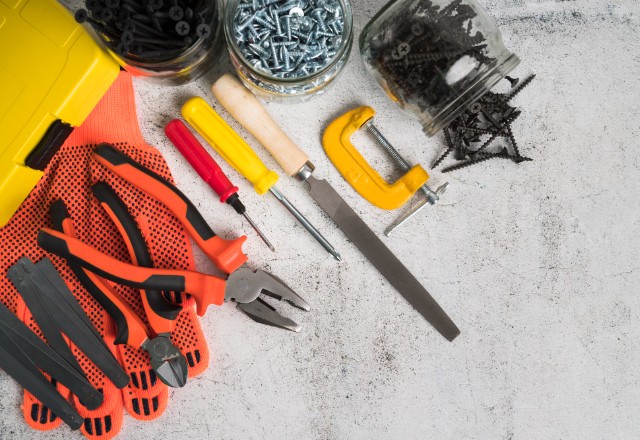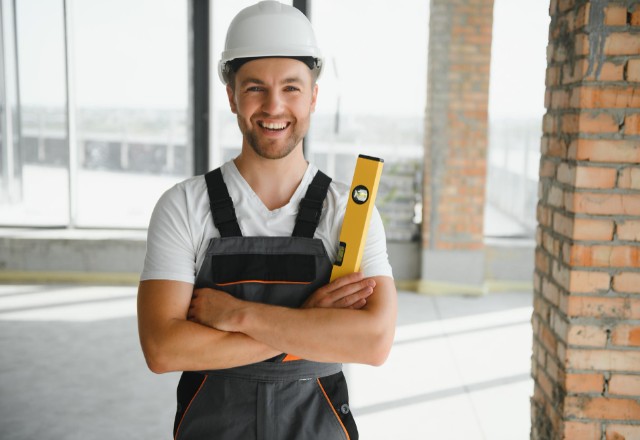Metal siding is a type of exterior wall cladding made from metal panels or sheets. It is typically used to protect the exterior walls of residential and commercial buildings from damage caused by rain, wind, and other weather elements. Metal siding provides a durable and low-maintenance alternative to traditional brick or wood-based siding systems. It also adds an attractive visual element to the building.
Disclaimer: This article is intended to provide general information on metal siding repair and maintenance. It should not be taken as professional advice or used as a substitute for professional services. When it comes to repairs, it is best to consult with experienced professionals who can ensure compliance with building codes and manufacturer warranties. For specific consultation in your particular situation, we recommend reaching out to the experts at Advance Roofing LLC. They have been proudly serving the Spokane, WA area for many years with the highest standard of quality roofing solutions.
Metal siding has gained immense popularity in the world of home exteriors, and with good reason. Homeowners are attracted to it for its numerous benefits that make it a practical choice for their needs. Here are some of the top benefits of metal siding:
- Fire Resistance: Unlike other siding materials that can easily catch fire, metal siding is incredibly fire-resistant. This is particularly important in areas prone to wildfires, making it an excellent option for homes in those regions.
- Curb Appeal: Metal siding offers an attractive look that can complement any type of home exterior. It also comes in a variety of color and style options, which allows homeowners to choose what perfectly suits their preferences.
- Low Maintenance: Unlike wood or vinyl siding that requires frequent maintenance, metal siding is low maintenance. With proper installation, metal siding can easily last for decades without needing much upkeep.
- Longevity: Metal siding is a durable and long-lasting option for homeowners. Made from sturdy materials, it can withstand extreme weather conditions, resist pests, and maintain its structural integrity over time.
- Wide Range of Styles: Metal siding comes in a wide range of styles ranging from standing seam to corrugated metal to flat panels. This offers homeowners various options to choose from and find what best matches their home’s aesthetic.
Overall, metal siding is a fantastic option for homeowners looking for a practical and long-lasting siding material. Its fire resistance, curb appeal, low-maintenance needs, longevity, and wide range of styles make it a highly recommended siding material.
Common Issues with Metal Siding

While metal siding offers various benefits, it’s not a foolproof option. Like all exterior home materials, metal siding can experience wear and tear over time. Some of the most common issues with metal siding include physical damage, water damage, warped siding, loose siding, and rusted nails. If left unaddressed, these issues can lead to significant structural damage, which can be costly to fix. Therefore, homeowners need to keep an eye out for these problems and know how to address them promptly. In this section, we’ll explore the most common issues with metal siding and how to tackle them to keep your siding looking great again.
Structural Damage
Structural damage is a common issue that can occur with metal siding due to various reasons. Hail, falling objects, and improper installation can cause significant damage to your metal siding, leading to aesthetic and functional issues. To repair structural damage in your metal siding, you need to follow a series of straightforward steps.
- First, you need to identify the extent of the damage to determine the size of the replacement piece required.
- Then use tin snips to cut out the damaged section, ensuring that the edges are clean and smooth.
- Once done, take the replacement piece and align it with the rest of the siding.
- Secure it in place with screws or nails, ensuring that the fasteners are driven in the flange to avoid affecting the metal panel’s appearance and be sure to also seal the edges with caulking.
Repairing structural damage to your metal siding is crucial to maintaining its longevity and preserving its aesthetic appeal. Be sure to consult a siding expert if the damage is beyond your repair capability or to ensure compliance with building codes.
Water Damage
Water damage is a common problem that can affect metal siding. It can cause swelling and mold growth, which can compromise the structure of both the siding and the home. To address water damage on metal siding, it’s important to identify the affected area and remove the damaged section.
To begin, inspect the siding for any signs of swelling or discoloration. These are indications of water damage. If you notice any, remove the damaged siding using tin snips. Ensure that the edges are clean and smooth before placing a new siding panel over the area.
It’s important to note that failing to address water damage promptly can lead to further issues down the line. The compromised structure can weaken the overall stability of the home, posing a potential safety hazard. It’s recommended to seek the assistance of a siding expert if you’re uncertain about the extent of the damage.
In conclusion, water damage on metal siding can be a serious issue that requires prompt attention. To repair it, identify the affected area, remove the damage, and replace with new siding. Regular maintenance and proper care can help prevent water damage and prolong the lifespan of your siding.
Loose Siding
Loose siding is a common issue for metal exteriors due to weather exposure and temperature changes. Here are the steps to address this problem:
- Inspect the area: Start by examining the siding around the loose section. Look for any visible nails or screws that have become loose or damaged.
- Cut replacement pieces: Use tin snips to cut new pieces of siding if necessary. It’s essential to get the exact size and shape of the damaged siding to ensure a seamless repair.
- Secure the siding: After cutting the replacement pieces, secure the siding in place. Use new nails or screws to fix the siding in place. Be sure to check the surrounding areas to ensure that the rest of the siding is secure.
- Repaint or wash with a garden hose: After repairing the loose siding, it’s time to give it a fresh look. Repaint the area that you fixed with a coat of paint that matches the rest of the siding. If you prefer, you can also wash the entire section with a garden hose to remove any accumulated dirt or grime.
By following these simple steps, you can successfully repair your loose metal siding and maintain the appearance of your home.
Improper Installation
Improper installation is one of the most common mistakes made during metal siding installation, which often leads to issues with the siding. Some common mistakes include the use of incorrect fasteners or overdriving nails, which can cause the panels to warp or expose the fasteners. Additionally, failing to properly overlap the siding panels can lead to gaps that allow water and moisture to penetrate the structure, leading to water damage and corrosion.
However, with proper installation techniques, these issues can be easily avoided. Properly installing metal siding usually involves using the right tools, including fasteners and brackets, and following the manufacturer’s instructions for installation. It is also essential to ensure that the panels are overlapped correctly, and all seams and joints are sealed with a high-quality sealant.
By avoiding common mistakes during metal siding installation, such as using improper fasteners or failing to overlap panels correctly, homeowners can prevent issues with their siding. This can result in a longer lifespan for the siding and a more aesthetically pleasing appearance for their home or building. Consulting with a siding expert or contractor can also help to ensure proper installation and prevent common mistakes.
Preparing for a Repair Job

Preparing for a Repair Job: Metal siding is an excellent option for homeowners. It is durable, long-lasting, and energy-efficient. However, even with proper maintenance, metal siding can develop issues, such as physical damage from external factors, warped panels, or improper installation. In such cases, repairing metal siding can be an excellent option. But before you begin the repairing process, careful preparation is necessary to ensure that the repair job is successful.
Gather Proper Materials and Tools
Before repairing metal siding, it is important to gather the proper materials and tools. Having the right tools on hand will help make the process much easier. A caulking gun and a utility knife are essential for repairing metal siding. Extra siding pieces should also be readily available in case replacements are needed during the repair process. It is also important to clear the work area of debris before beginning any repairs.
Other replacement items may be necessary depending on the extent of the damage to the siding. Rusty nails may need to be replaced, and aluminum coil stock may be needed to patch any holes or tears in the siding material.
Ensure Area is Clean and Clear of Debris
Before starting any repair job on your metal siding, it is essential to ensure that the work area is clean and clear of debris. This ensures that the repair job is done correctly and the repair area is safe for anyone working in the area.
Clear the area of any furniture, plants, or obstacles that may obstruct the repair work. Once the area is free from any equipment or furniture, it should be cleaned using mild soap and a soft-bristle brush to remove any dirt, dust, or debris that may have accumulated on the siding.
It is also important to check for any protruding nails, screws, or sharp edges that may cause injury or damage your equipment during the repair process. Taking the time to prepare the work site before starting the repair job will make it easier, safer, and more efficient to complete.
Inspect the Area for Further Damage
Before beginning any repairs, it is crucial to inspect the area thoroughly to determine the extent of the damage to your metal siding. Gathering the necessary tools and materials will make the inspection process easier and more efficient.
You’ll need: safety goggles, a ladder, gloves, a putty knife, tin snips, and a rusty nail detector.
With these tools in hand, you can begin inspecting each piece of your metal siding. Walk around your home and pay close attention to any cracks, chips, holes, or punctures. Additionally, look for looseness of siding as it could be an indication of structural damage.
Be sure to check for any signs of water damage that may have led to mold or discoloration on the surface of the siding.
Repairing Structural Damage to Your Metal Siding
Structural damage to metal siding can occur due to extreme weather events or incorrect installation. This type of damage is often more difficult to repair and may require more extensive work than other types of damage. To repair structural damage, it is important to assess the extent of the damage and determine the best course of action for a successful repair job.
- First, inspect the area around the damaged section for any signs that the damage has caused further deterioration in surrounding areas. If any adjacent sections appear weakened, they should be replaced as well before proceeding with repairs in order to prevent future issues. It may also be necessary to remove sections of siding or trim around the area in order to gain access to the damaged area.
- Once the area is prepared for repair, use a utility knife or tin snips to cut away any broken pieces of siding. Use a flathead screwdriver to remove any nails or screws that may be holding the siding in place and then replace them with new ones. After removing the old piece of siding, measure out a new piece of coil stock and cut it to size using tin snips.
- Finally, use a caulking gun loaded with metal roof sealant to secure the new section of siding into place. Ensure that all seams are properly sealed so that moisture does not penetrate your home’s interior walls. After allowing enough time for the sealant to dry, you can paint the new section of siding to match your home’s exterior.
Repairing Water Damage to Your Metal Siding
Repairing water damage on metal siding is crucial to the overall maintenance of your home. The first step is to check for signs of mold growth, which can be an indication of water damage that could eventually lead to more severe structural issues.
- To repair the damage, begin by removing the affected area of siding.
- Once removed, ensure the area is dry, clean and free of any debris or mold.
- Next, apply a thick bead of sealant to the exposed surface to prevent future water damage.
- Lastly, use a rain-siding-specific paint like Calbar to spot-paint the area, making sure to blend it seamlessly with the surrounding panels. This will provide a protective layer against the elements and give your siding a fresh, consistent look.
By properly repairing water damage on your metal siding, you can prevent the spread of mold and avoid costly repairs. Remember to regularly inspect your siding and promptly address any issues to ensure the longevity and durability of your home’s exterior.
Replacing Damaged Pieces of Your Metal Siding
If you’re seeing damaged pieces on your metal siding, it’s important to take action before the situation worsens. With a few tools and materials, you can replace the damaged section and restore your metal siding to its former glory. Here are the steps to follow:
- Gather materials and tools: You’ll need a siding removal tool, tin snips, galvanized nails, and a measuring tape.
- Remove the damaged siding piece: Begin by releasing the piece above and prying the damaged piece off. Be careful not to damage surrounding panels.
- Measure and cut replacement piece: Measure the dimensions of the damaged piece and use the tin snips to cut a new piece to fit. Make sure it fits snugly in the opening and is the correct height.
- Install the replacement: Use galvanized nails to attach the new piece of metal siding to your home’s structure. Nail it in place at the top and bottom, leaving room for expansion and contraction.
- Reposition the piece above: Carefully reposition the panel above the new one, ensuring that everything is aligned properly and tightly secured.
By following these steps, you can replace damaged pieces of your metal siding and restore the aesthetic appeal of your home.
DIY or Call a Pro?

When it comes to metal siding repair, the decision between tackling the repair yourself or hiring a professional can be a tricky one. DIY repairs are often cheaper, can be done on your own schedule, and offer a sense of satisfaction upon completion. However, there are certain risks associated with DIY repairs. If the repair is not done properly, it can lead to further damage, which can be expensive to fix in the long run.
Additionally, DIY repairs may not be up to building codes, which can pose legal problems and insurance-related issues. Professionals, on the other hand, have the expertise and knowledge to carry out repairs safely and in compliance with building codes and manufacturer warranties.
If you choose to go the DIY route, make sure you have the proper tools and materials and follow instructions carefully to avoid further damage. However, for complex or extensive damage, it’s best to call a professional, as they can ensure that the repairs are done correctly and safely. Ultimately, the decision between DIY and professional repairs depends on the type and extent of damage and your level of expertise. But when in doubt, it’s always best to consult a professional.
Conclusion
In summary, metal siding is a durable and energy-efficient option for home exteriors, but it requires regular maintenance and occasional repairs. By properly maintaining metal siding, homeowners can avoid common issues such as water damage and warped or loose siding. However, when it comes to repairs, it’s important to know when it’s best to call in a professional. While some minor repairs can be done DIY-style, major physical or structural damage should be handled by experienced siding contractors who can ensure compliance with building codes and manufacturer warranties. Neglecting repairs or improper installations can pose legal and insurance-related problems for homeowners. In the end, proper maintenance and repair of metal siding can help ensure that it looks great and functions properly for years to come.



 509-201-4190
509-201-4190
